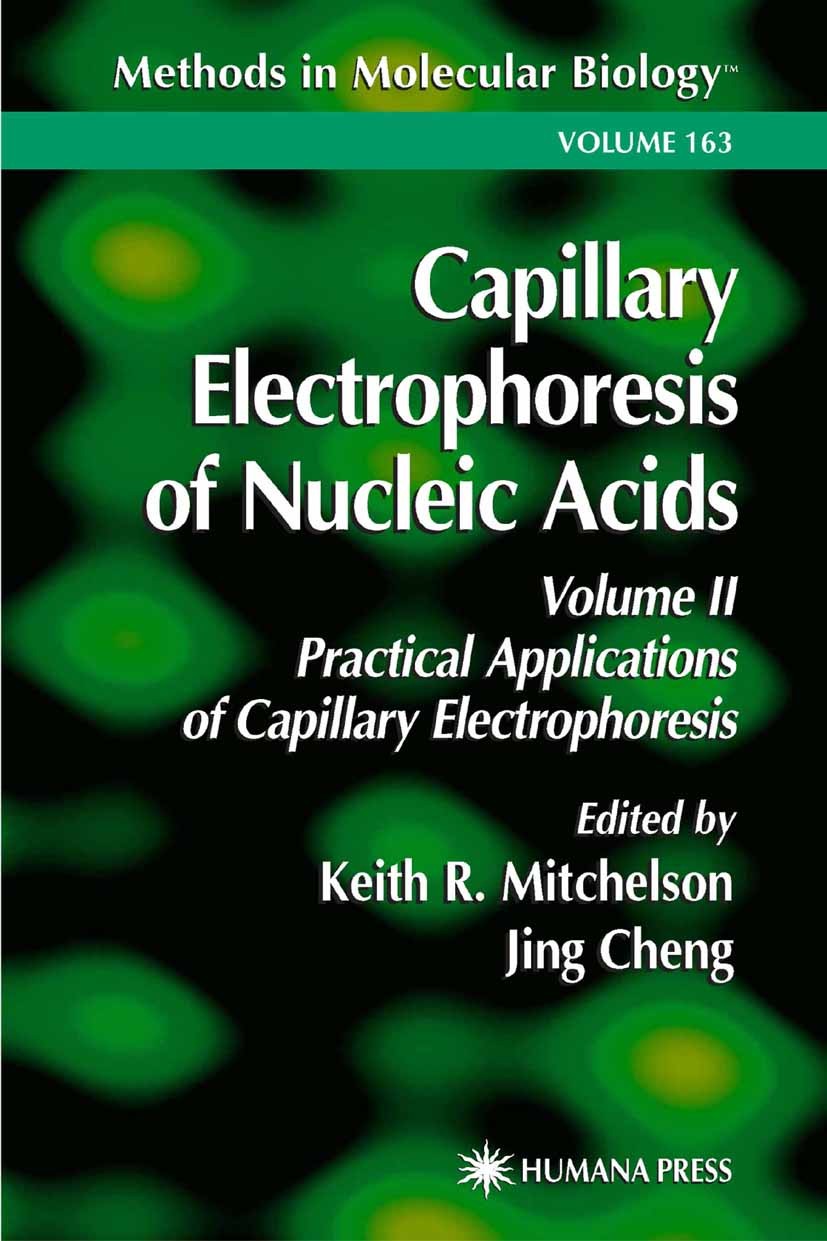| 书目名称 | Capillary Electrophoresis of Nucleic Acids | | 编辑 | Keith R. Mitchelson,Jing Cheng | | 视频video | http://file.papertrans.cn/222/221394/221394.mp4 | | 概述 | Includes supplementary material: | | 丛书名称 | Methods in Molecular Biology | | 图书封面 |  | | 描述 | The development of PCR, which enables extremely small amounts of DNA to be amplified, led to the rapid development of a multiplicity of a- lytical procedures to utilize this new resource for analysis of genetic variation and for the detection of disease causing mutations. The advent of capillary electrophoresis (CE), with its power to separate and analyze very small amounts of DNA, has also stimulated researchers to develop analytical procedures for the CE format. The advantages of CE in terms of speed and reproducibility of analysis are manifold. Further, the high sensitivity of detection, and the ab- ity to increase sample throughput with parallel analysis, has led to the creation of a full range of analysis of DNA molecules, from modified DNA-adducts and single–strand oligonucleotides through to PCR-amplified DNA fragments and whole chromosomes. Capillary Electrophoresis of Nucleic Acids focuses on such analytical protocols, which can be used for detection and analysis of mutations and modification, from precise DNA loci through to entire genomes of organisms. Important practical considerations for CE, such as the choice of separation media, electrophoresis conditions, and the i | | 出版日期 | Book 2001 | | 关键词 | DNA; Nucleotide; PCR; RNA; fluorescence; gene expression; temperature; tissue | | 版次 | 1 | | doi | https://doi.org/10.1385/1592591167 | | isbn_softcover | 978-1-61737-177-6 | | isbn_ebook | 978-1-59259-116-9Series ISSN 1064-3745 Series E-ISSN 1940-6029 | | issn_series | 1064-3745 | | copyright | Humana Press 2001 |
The information of publication is updating

|
|
 |Archiver|手机版|小黑屋|
派博传思国际
( 京公网安备110108008328)
GMT+8, 2025-11-15 17:57
|Archiver|手机版|小黑屋|
派博传思国际
( 京公网安备110108008328)
GMT+8, 2025-11-15 17:57


